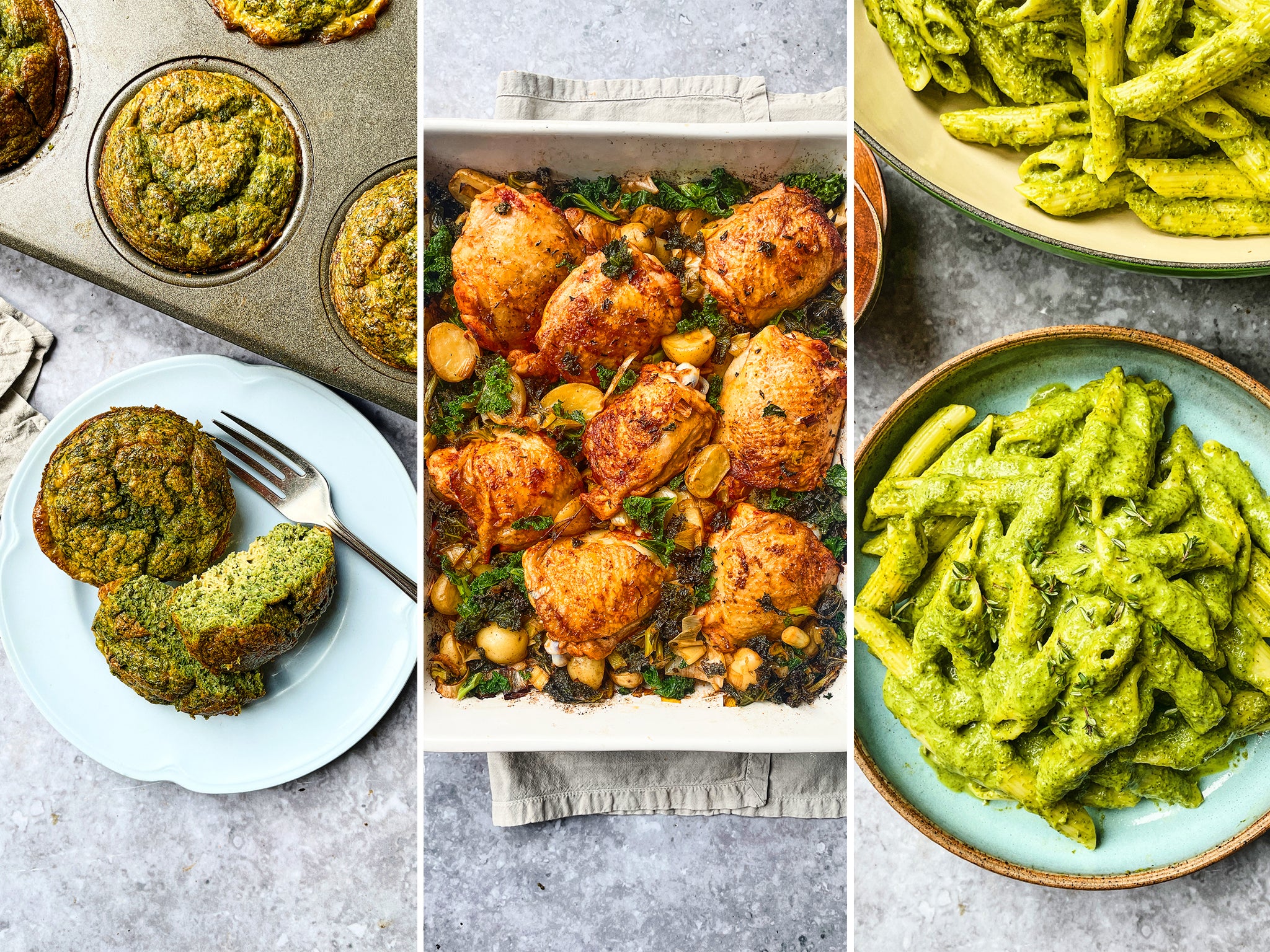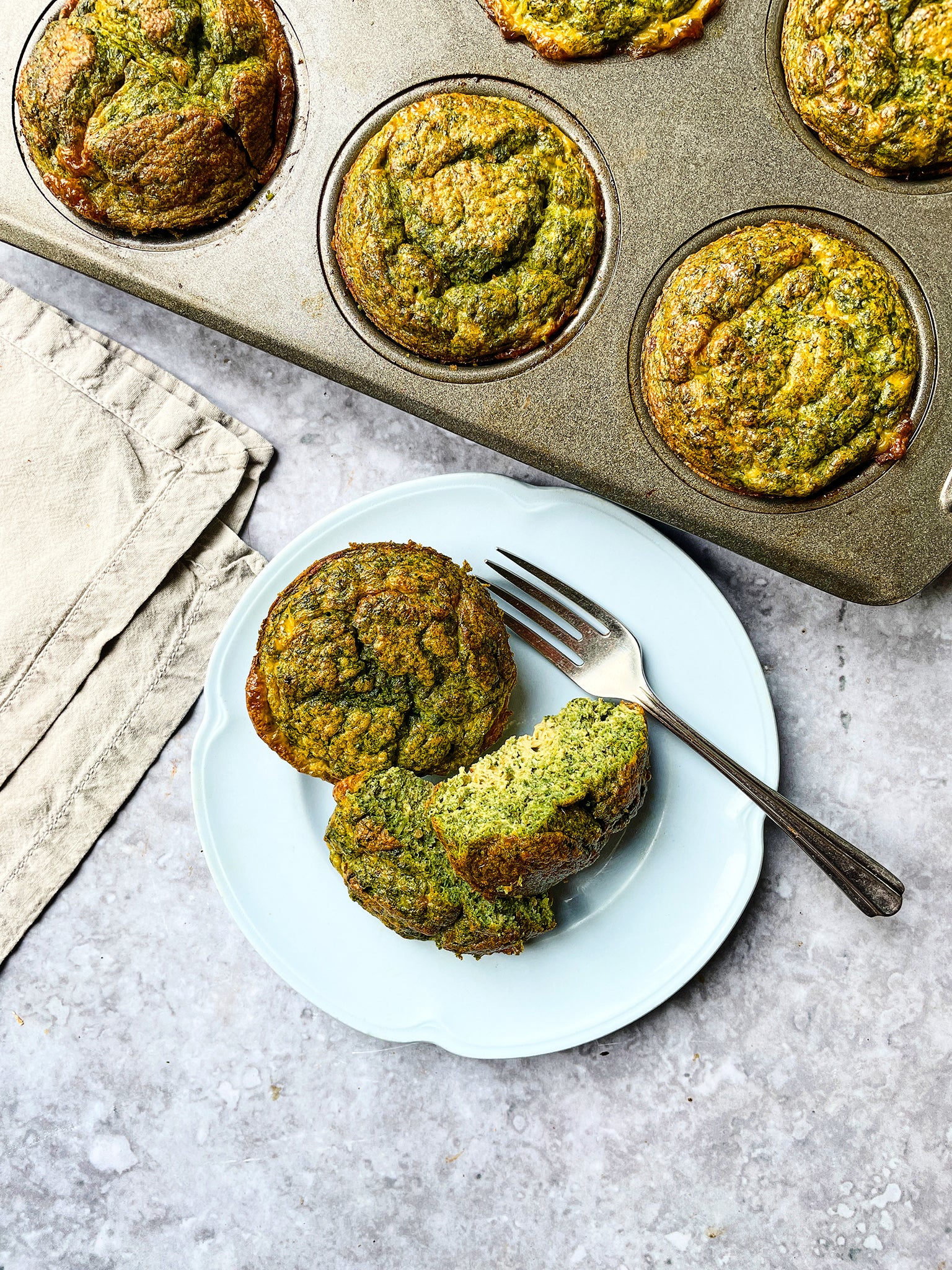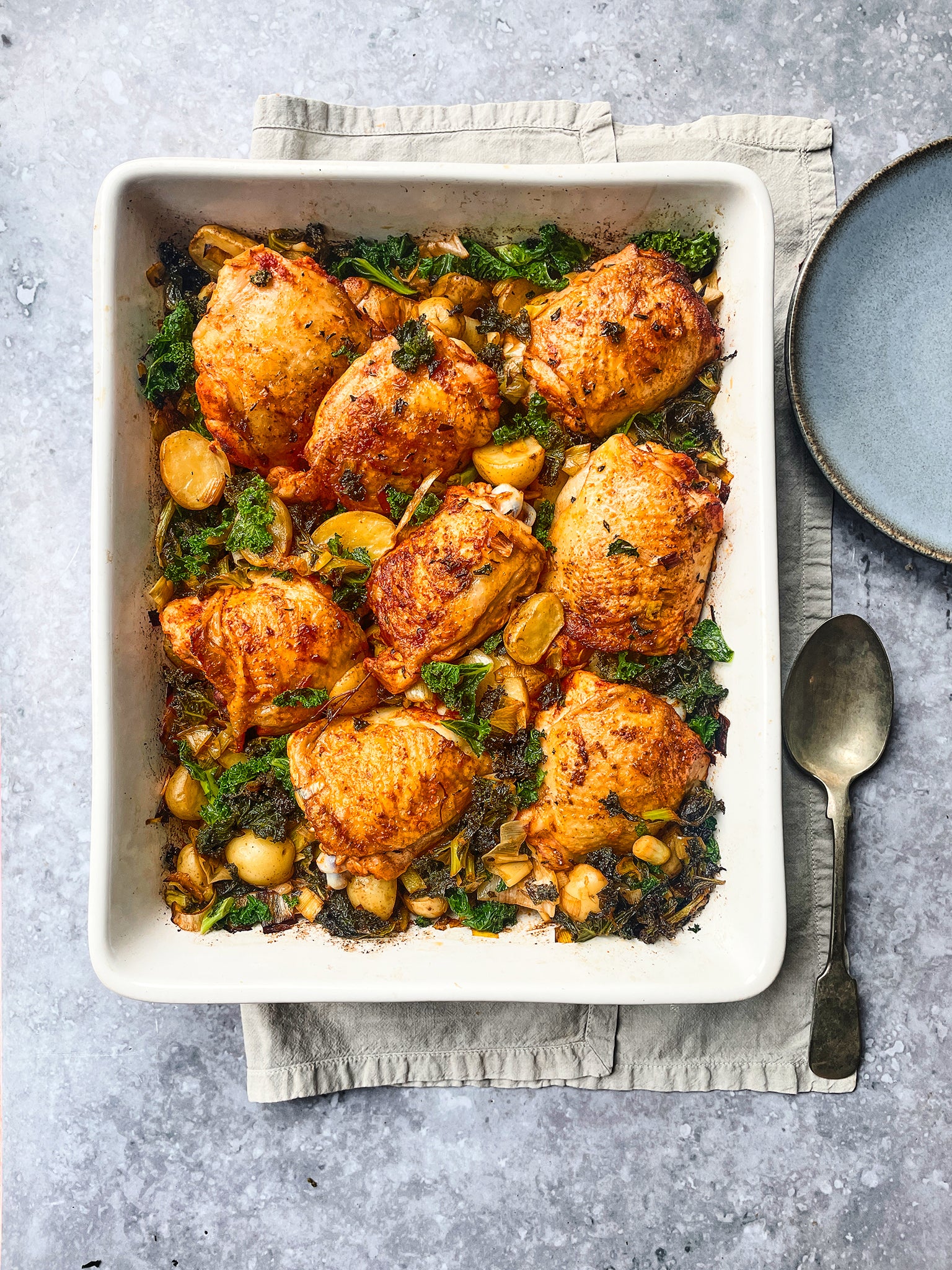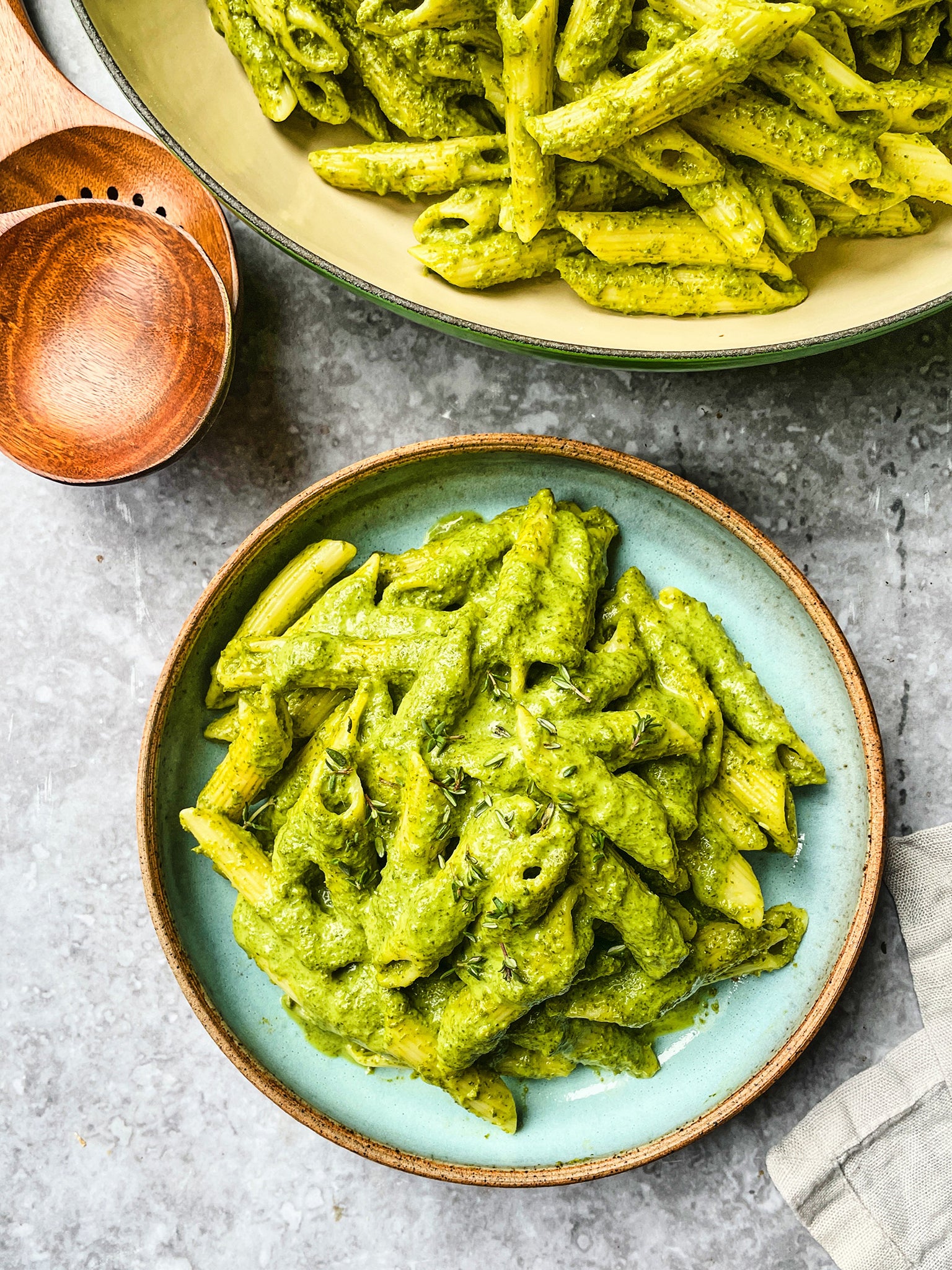Folate isn’t just for pregnant women – we should all be eating more of it to avoid these health problems
We all know we should be eating a balanced diet, but one vitamin in particular is having an identity crisis. We should all be eating more folate – here’s three recipes to show you how

It’s well documented that we should be eating a balanced diet but it appears that one vitamin in particular is going under the radar.
A new survey by Discover Great Veg found that despite folate’s importance to our wellbeing, 75 per cent of Brits don’t know folate is found naturally in food, and one in five think it’s only pregnant women who need to consume it at all.
But that just isn’t the case. Folate matters to us all – from anaemia to cardiovascular disease and even mental health, not eating enough folate (otherwise known as vitamin B9) can lead to a range of health problems. But these could be avoided by including more folate, with a few simple tweaks to our diets.
The latest National Diet and Nutrition Survey report has shown that levels of folate in British diets are not as high as they should be. In fact, average blood folate concentrations have decreased over the past 11 years by 25 to 28 per cent across all age groups.
The lack of folate in many people’s diets is possibly due to the confusion over who needs this vital vitamin. Alongside the misconception that folate is only needed for expectant mums, the research also showed that one in 10 think it is only important for adults, when in fact we should all eat folate, something only three in 10 people recognised.
“Folate is actually important at every stage of life so it is concerning to see that not only do the majority of people not know how much folate they should be eating every day – just 6 per cent knew it should be 200mg – but they don’t know where to get it from either,” says nutritionist Jenny Tschiesche.
Luckily, folate is naturally found in a wide range of everyday foods, including green leafy veg like kale and spinach, chickpeas and kidney beans, as well as liver.
With 194ug and 141ug folate per 100g respectively, spinach and kale are two of the best sources available – as well as being two of the most versatile vegetables. Tschiesche has created a set of family recipes using spinach and kale that will help ensure you can reach the recommended dietary allowance (RDA) for this crucial vitamin. These include spinach and kale mini quiches, lemony chicken with kale and potatoes traybake and kale pasta sauce – a delicious alternative to classic pesto pasta. Each recipe contains at least 30 per cent of your RDA for folate per portion.
“One of the most common causes of low folate in children particularly is low intake of fresh fruits and vegetables,” says Tschiesche. “It’s a really important vitamin for us to all get enough of and eating more green leafy veg is a great way to do that. As well as folate, spinach and kale also contain other key nutrients including vitamins K, A and C, as well as calcium.”
Tell-tale signs that you’re not eating enough folate can include:
1. Tiredness
2. Depression and anxiety
3. Swollen tongue
4. Mouth sores
5. Premature grey hair
6. Reduced sense of taste
7. Growth problems
Spinach and kale mini quiches recipe

Makes: 8
Prep time: 10 minutes | Cook time: 25 minutes
Ingredients:
90g spinach
90g kale
3 tbsp water
6 large eggs
180g fresh pesto
Ground black pepper
A little olive oil for greasing
You will need an 8-hole muffin baking tray – each muffin hole should have at least a 125ml capacity
Method:
1. Preheat your oven to 190C or gas mark 5. Heat a medium saucepan over medium heat and add the spinach, kale and water. Cook for a few minutes until the leaves have wilted and reduced. Leave to cool. Pop these leaves into your food processor and blend on medium speed.
2. Meanwhile, beat the eggs with the pesto and pepper then add to the cooled leaves in the food processor before blending on top speed.
3. Grease the 8 holes of your muffin tin with a little oil or use cases to avoid sticking. Fill each of the 8 greased muffin holes with equal amounts of the eggy mixture. Put the tray in the oven and cook for 20-25 minutes or until a cocktail stick inserted into the quiches comes out clean.
4. Serve warm or cold.
Nutrition per portion (2 quiches): 358 kcal, carbohydrates 6.01g of which sugars 1.14g, fats 33.57g of which saturated fat 6.9g, protein 10.43g and folate 122ug.
Folate: 30% of RDA
Lemony chicken traybake with kale and potatoes recipe

Serves: 4
Prep time: 10 minutes | Cook time: 30 minutes
Ingredients:
1 large leek, sliced
300g miniature/baby potatoes, boiled then halved
4 cloves garlic, peeled and lightly smashed
2 tbsp olive oil, divided into 1 1/3 tbsp and 2/3 tbsp (2 tsp)
8 skin-on, bone-in chicken thighs
1 tsp sweet smoked paprika
2 tsp lemon zest
Juice of 1 lemon
One small pack of fresh thyme
350g kale
Method:
1. Preheat the oven to 210C (fan) 230C (standard).
2. Toss the leek slices, potatoes, and garlic in 1+1/3 tbsp olive oil in a large bowl. Season to taste.
3. Spread out on 1-2 baking trays.
4. Add the chicken thighs to the same bowl and toss with the paprika, lemon zest and lemon juice. Season to taste.
5. Place the coated chicken portion on top of the vegetables, each with a sprig of thyme on top.
6. Bake for 15 minutes. Meanwhile, toss the kale in the remaining 2/3 tbsp i.e. 2 tsp olive oil. Stir to coat each piece well then add to the baking tray/s giving everything a good stir in the process.
7. Bake for a further 15 minutes, stirring once. Check that the chicken juices run clear and if you have a meat thermometer that the internal temperature at the thickest part is at least 74C.
Nutrition per portion: 828 kcal, carbohydrates 28.13g of which sugars 4.44g, fats 55.94g of which saturated fat 14.162g, protein 54.01g and folate 164ug.
Folate: 41% of RDA
Kale pasta sauce recipe

Serves: 4
Prep time: 10 minutes | Cook time: 10 minutes
Ingredients:
500g pasta
1 tbsp olive oil
280g kale
3 cloves of garlic, chopped
3 tbsp. water
90g grated parmesan
240ml vegetable stock
180g cream cheese (low fat used in nutritional analysis)
Method:
1. Cook the pasta according to packet instructions.
2. Meanwhile, in a medium saucepan heat the oil over a medium heat. Add the kale and garlic and fry for about 1-2 minutes, until the leaves start to wilt a little then add the water and keep stirring for a further couple of minutes. Transfer the kale and garlic to a food processor and blend for a few minutes then add the grated parmesan, vegetable stock and cream cheese. Blend at full speed until you have a bright green and creamy texture. Stir this in to your cooked pasta then warm through gently before serving.
Nutrition per portion: 445 kcal, carbohydrates 52.27g of which sugars 5.35g, fats 19.41g of which saturated fat 8.7g, protein 18.43g and folate 123ug.
Folate: 30% of RDA
For inspiration on the health benefits and many ways to enjoy vegetables, visit www.discovergreatveg.co.uk
Join our commenting forum
Join thought-provoking conversations, follow other Independent readers and see their replies
Comments
Bookmark popover
Removed from bookmarks